RARE! WWII “RESTRICTED” Pearl Harbor Hawaii Islands Fleet Air Photographic Laboratory Utility Squadron One (FAPLUS-1) Navigation & Fathom Map

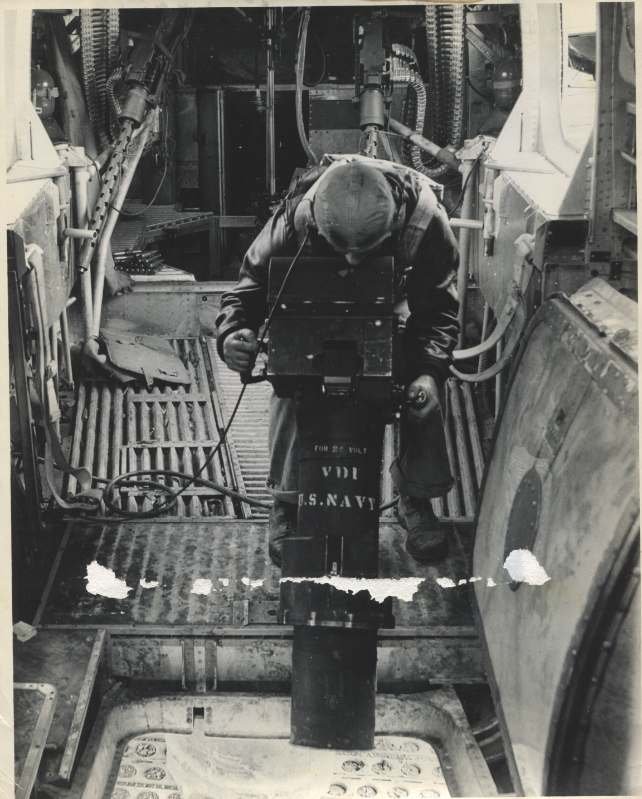







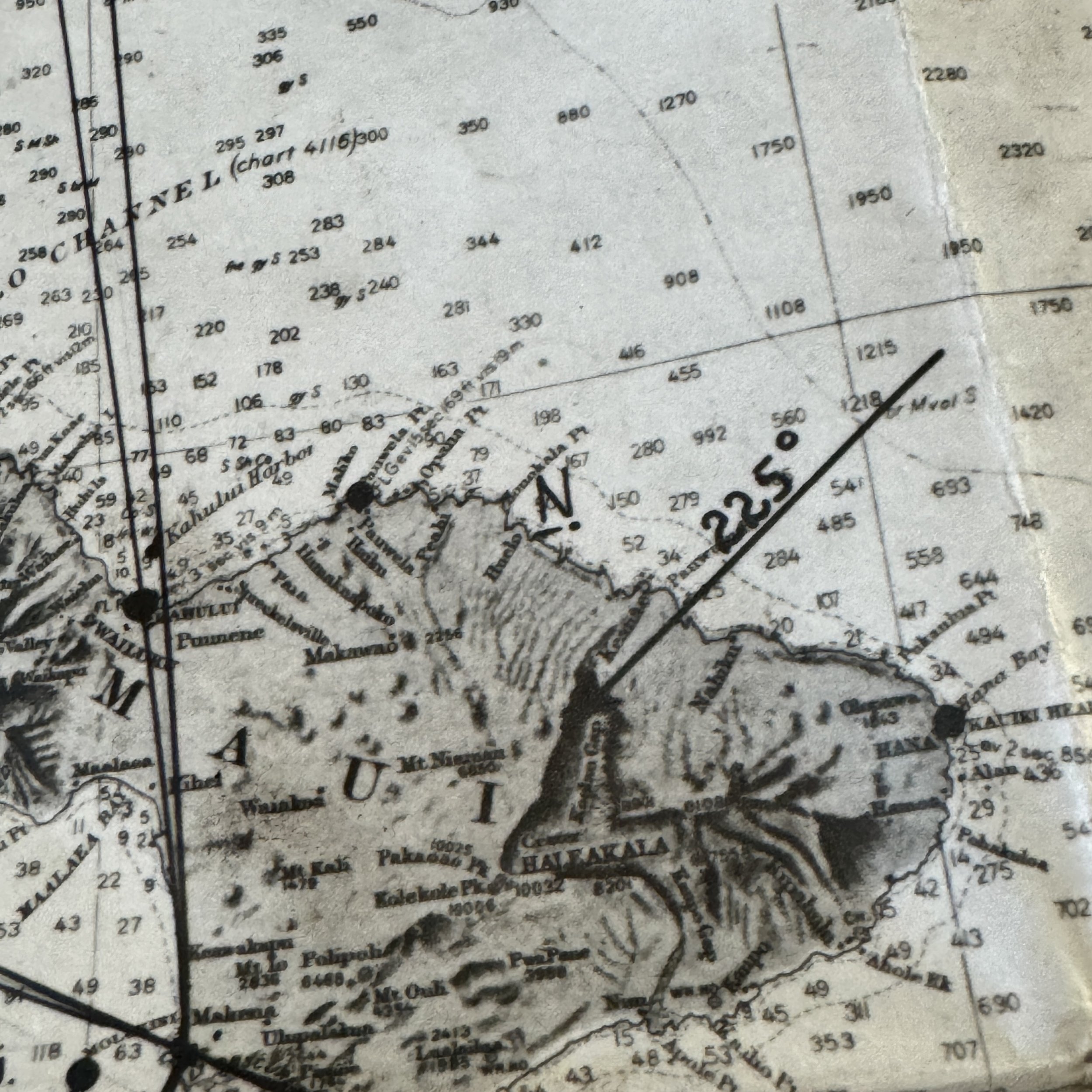
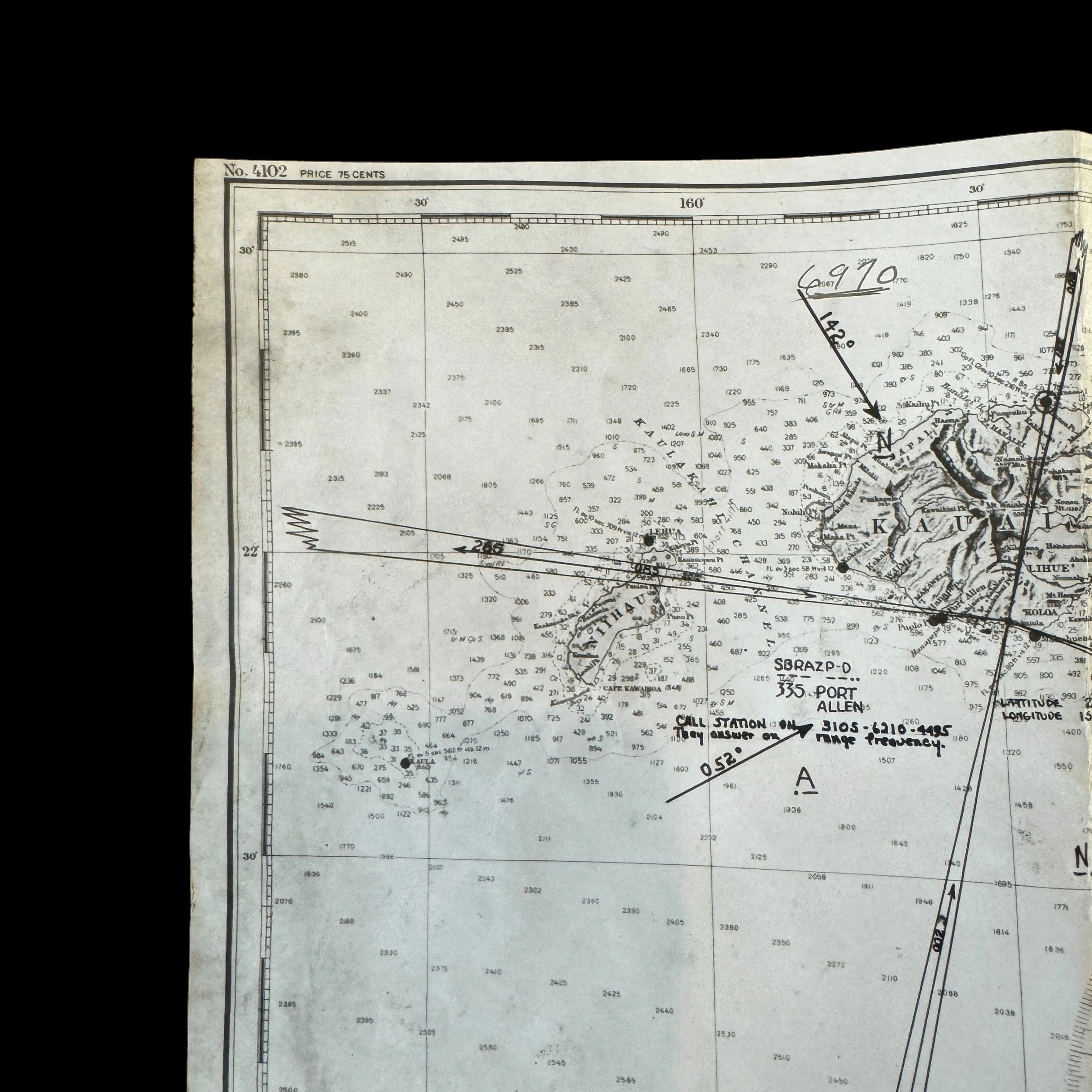










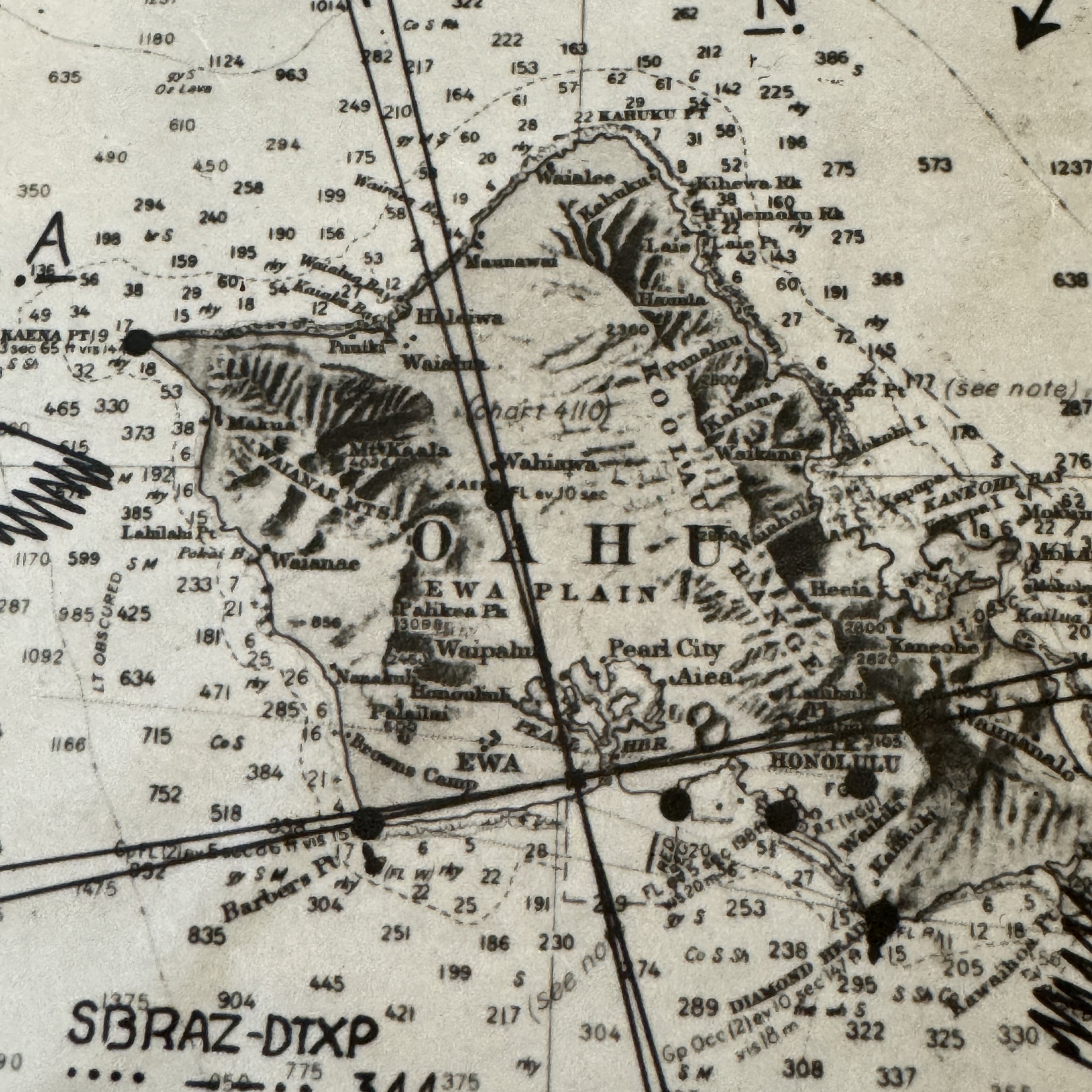
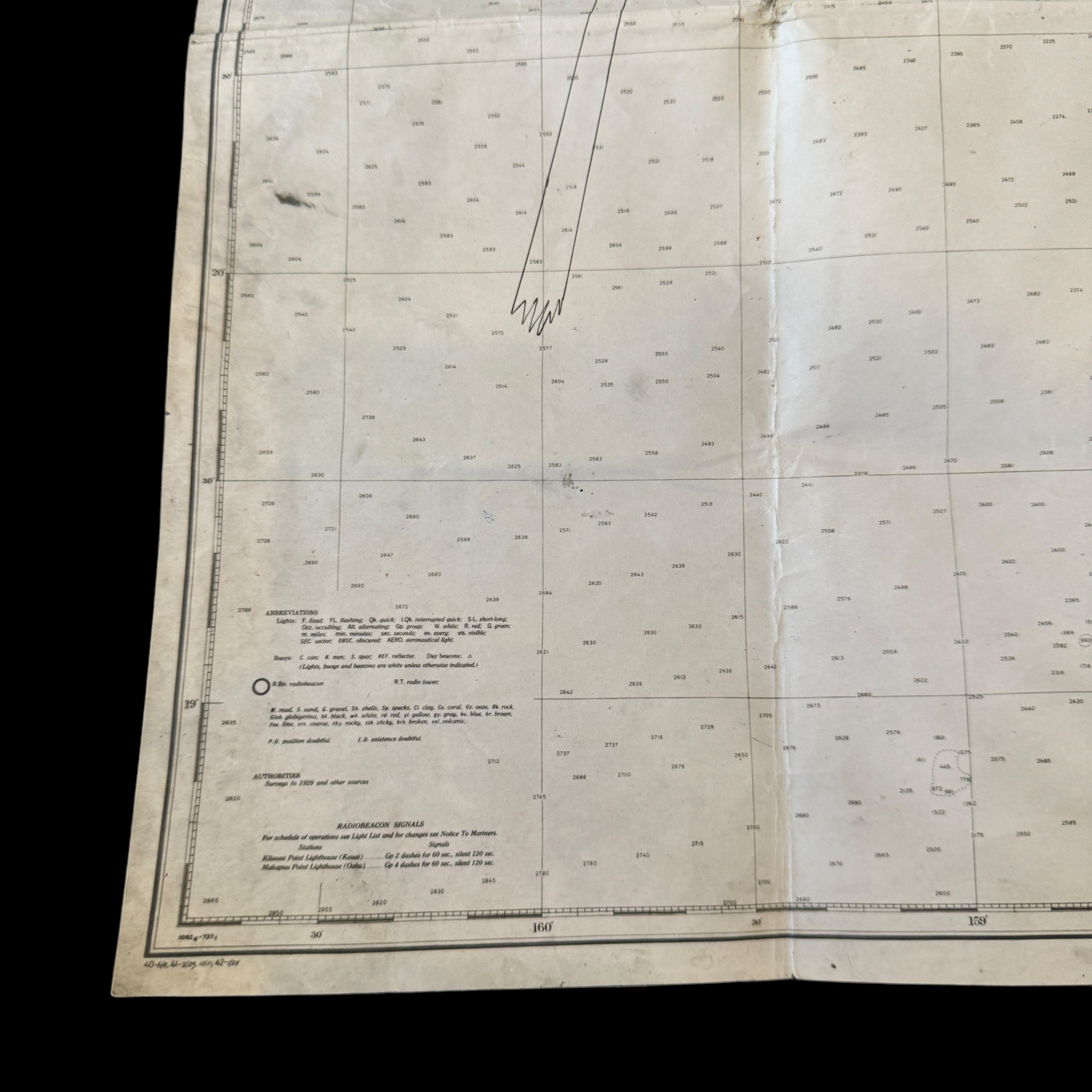



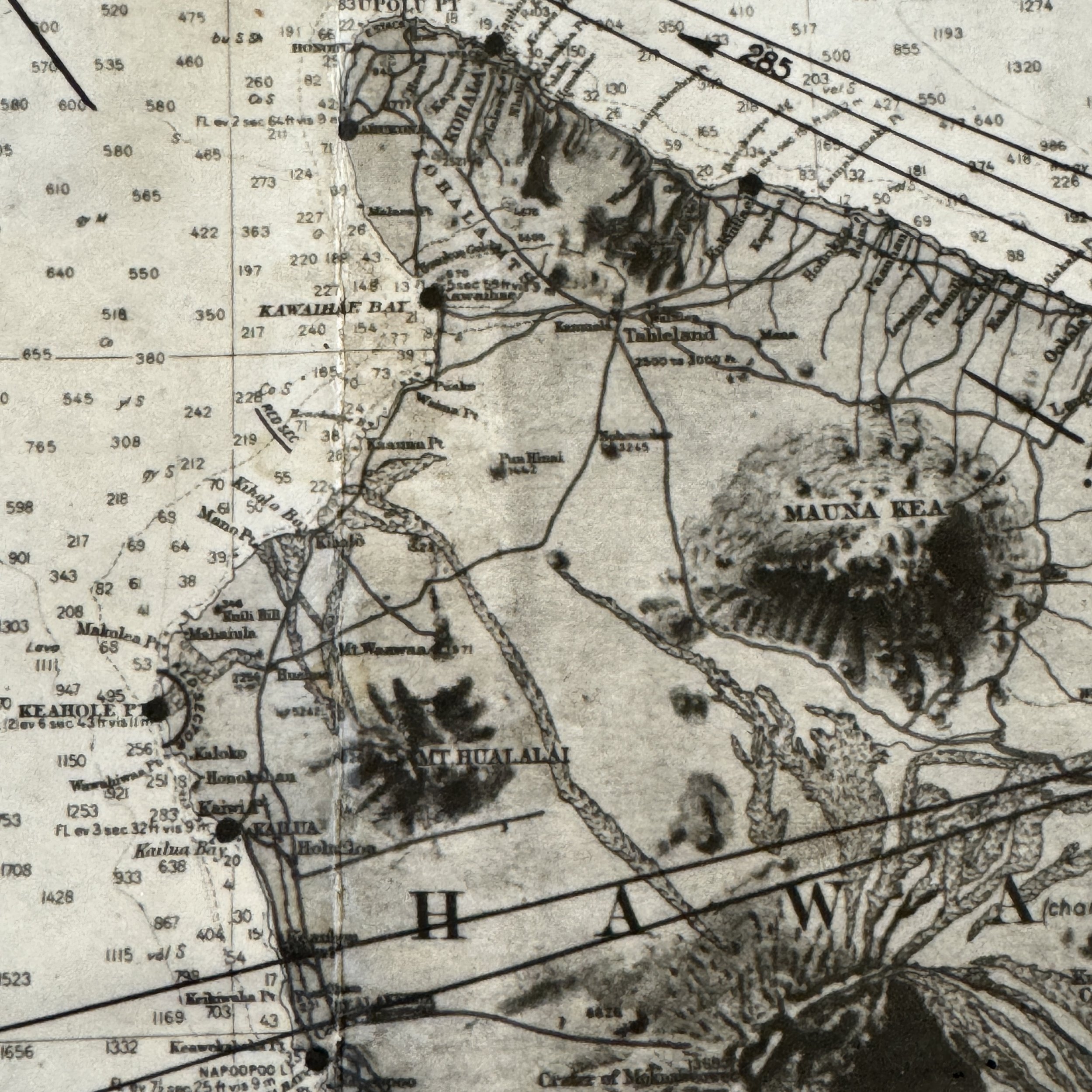






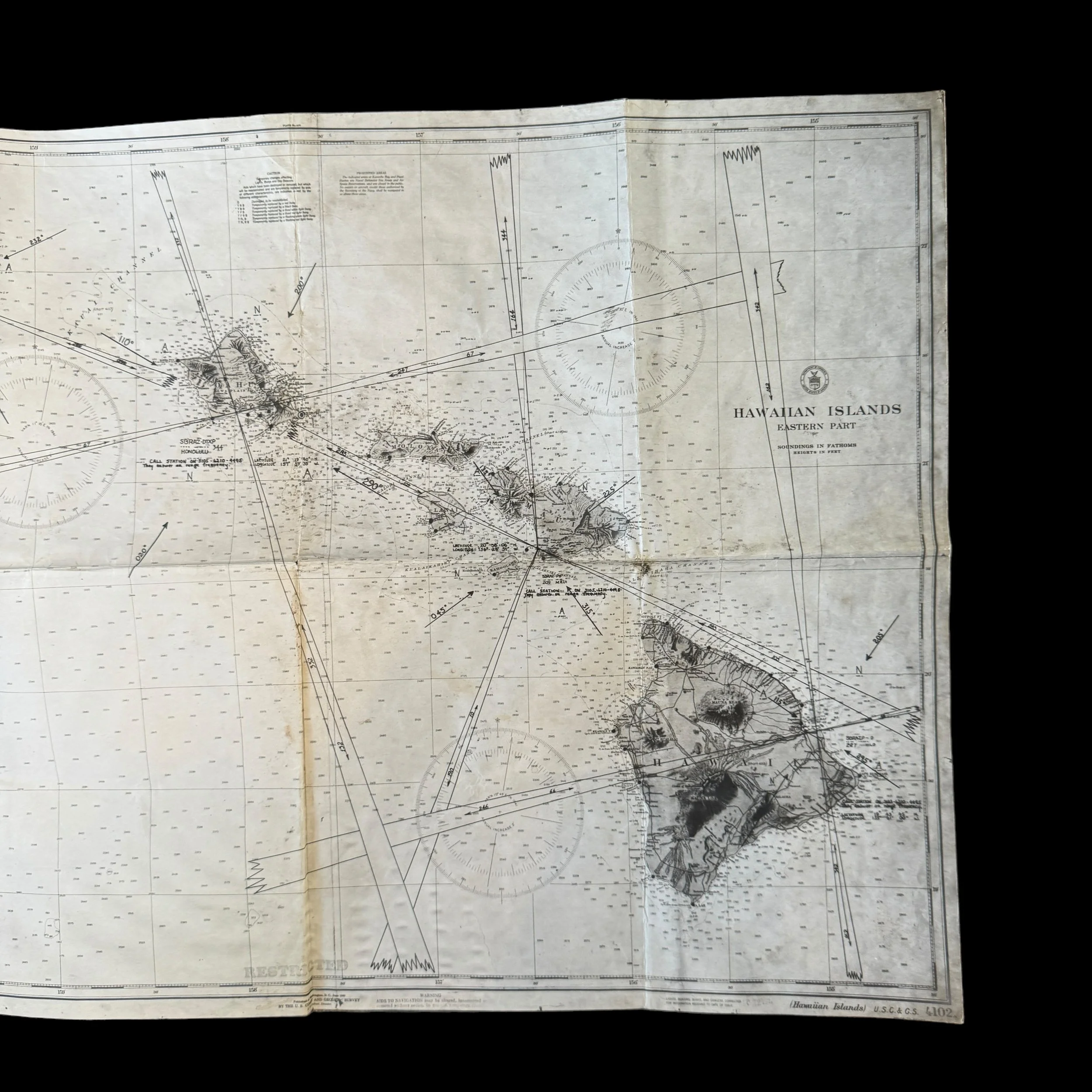




RARE! WWII “RESTRICTED” Pearl Harbor Hawaii Islands Fleet Air Photographic Laboratory Utility Squadron One (FAPLUS-1) Navigation & Fathom Map
Come with C.O.A.
This extremely rare and museum grade World War II “RESTRICTED” marked 1943 dated map of Hawaii was used by the Fleet Air Photographic Laboratory Utility Squadron One. This navigation and fathom map of the Hawaiian islands features all main islands including the infamous island of Oahu with Pearl Harbor.
The Role of Fleet Air Photographic Laboratory Utility Squadron One During WWII
The Second World War was a global conflict that necessitated rapid advancements in military technology and strategy. Among the numerous innovations was the increased use of aerial photography, which played a crucial role in intelligence gathering, mapping, and tactical planning. The Fleet Air Photographic Laboratory Utility Squadron One (FAPLUS-1) was a pivotal unit in this domain. This essay explores the establishment, operations, and impact of FAPLUS-1 during World War II.
Establishment of FAPLUS-1
Fleet Air Photographic Laboratory Utility Squadron One was established in response to the growing need for aerial reconnaissance and photographic intelligence. As the United States Navy expanded its operations across the vast theaters of the Pacific and Atlantic Oceans, it became evident that effective photographic reconnaissance could provide invaluable insights into enemy positions, movements, and fortifications. FAPLUS-1 was formed to address this critical need, bringing together skilled personnel and advanced photographic equipment.
Training and Equipment
The personnel of FAPLUS-1 underwent rigorous training to master the intricacies of aerial photography. This training included the operation of specialized cameras, the development and interpretation of film, and the maintenance of photographic equipment under combat conditions. The squadron was equipped with cutting-edge technology of the time, including high-resolution cameras capable of capturing detailed images from high altitudes. These cameras were often mounted on reconnaissance aircraft, such as the F6F Hellcat and the PBY Catalina, which were modified to accommodate the photographic equipment.
Operations and Missions
FAPLUS-1 undertook a wide range of missions across various theaters of war. Their operations can be categorized into several key areas:
Reconnaissance and Intelligence Gathering: One of the primary roles of FAPLUS-1 was to conduct reconnaissance missions over enemy territory. These missions aimed to gather intelligence on enemy positions, movements, and fortifications. The photographs captured during these missions were critical in planning military operations, including air strikes, amphibious assaults, and ground offensives.
Mapping and Charting: Accurate maps were essential for navigation and strategic planning. FAPLUS-1 played a crucial role in producing detailed maps of contested areas, islands, and coastlines. These maps were used by pilots, naval commanders, and ground forces to navigate unfamiliar territories and plan their operations effectively.
Damage Assessment: After air strikes and naval bombardments, it was important to assess the damage inflicted on enemy targets. FAPLUS-1 conducted post-strike reconnaissance missions to photograph and evaluate the effectiveness of these attacks. This information helped in refining bombing techniques and targeting strategies.
Training and Support: FAPLUS-1 also provided training and support to other units within the Navy. They shared their expertise in aerial photography, helping to improve the overall capabilities of the Navy's reconnaissance efforts.
Key Achievements and Impact
The contributions of FAPLUS-1 had a profound impact on the success of the Allied forces during World War II. Some of the key achievements and impacts of the squadron include:
Battle of Midway: The Battle of Midway was a turning point in the Pacific Theater. FAPLUS-1 played a crucial role in gathering intelligence that helped the U.S. Navy anticipate and counter Japanese movements. Their reconnaissance missions provided vital information about the location and composition of the Japanese fleet, contributing to the decisive victory.
Island Hopping Campaign: The island hopping strategy employed by the Allies relied heavily on accurate intelligence and mapping. FAPLUS-1's efforts in mapping and reconnaissance were instrumental in the successful execution of amphibious assaults on strategic islands such as Guadalcanal, Tarawa, and Iwo Jima.
D-Day Invasion: In the European Theater, FAPLUS-1's counterparts provided similar support for the D-Day invasion. Aerial photographs of the Normandy coast helped plan the landings and identify key German fortifications, contributing to the success of Operation Overlord.
Technological Advancements: The work of FAPLUS-1 led to significant advancements in aerial photography technology and techniques. Innovations developed during the war laid the foundation for future advancements in aerial reconnaissance and intelligence gathering.
Challenges and Overcoming Obstacles
FAPLUS-1 faced numerous challenges during its operations. The hostile environments in which they operated posed significant risks to both personnel and equipment. Reconnaissance aircraft were often targeted by enemy fighters and anti-aircraft fire, making each mission a perilous endeavor. Additionally, the technical challenges of developing high-quality photographs in diverse and often harsh conditions required constant innovation and adaptability.
Despite these obstacles, the dedication and skill of FAPLUS-1 personnel ensured the success of their missions. Their ability to overcome technical difficulties and operate under extreme conditions was a testament to their training and resilience.
Legacy and Post-War Contributions
The legacy of FAPLUS-1 extends beyond their wartime contributions. The techniques and technologies developed during World War II had lasting impacts on aerial reconnaissance and intelligence operations in subsequent conflicts, including the Korean War and the Vietnam War. The expertise gained by FAPLUS-1 personnel also contributed to the post-war expansion of civilian and military aerial photography.
Furthermore, the experiences of FAPLUS-1 highlighted the importance of photographic intelligence in modern warfare, leading to the establishment of specialized reconnaissance units and the continued development of advanced imaging technologies.
The Fleet Air Photographic Laboratory Utility Squadron One played a vital role during World War II, providing essential reconnaissance, mapping, and intelligence support that significantly contributed to the success of Allied operations. Their achievements underscore the importance of aerial photography in modern military strategy and the enduring legacy of their pioneering efforts in the field of photographic intelligence. FAPLUS-1's contributions not only helped secure victory during the war but also paved the way for future advancements in reconnaissance and intelligence gathering, cementing their place in the annals of military history.